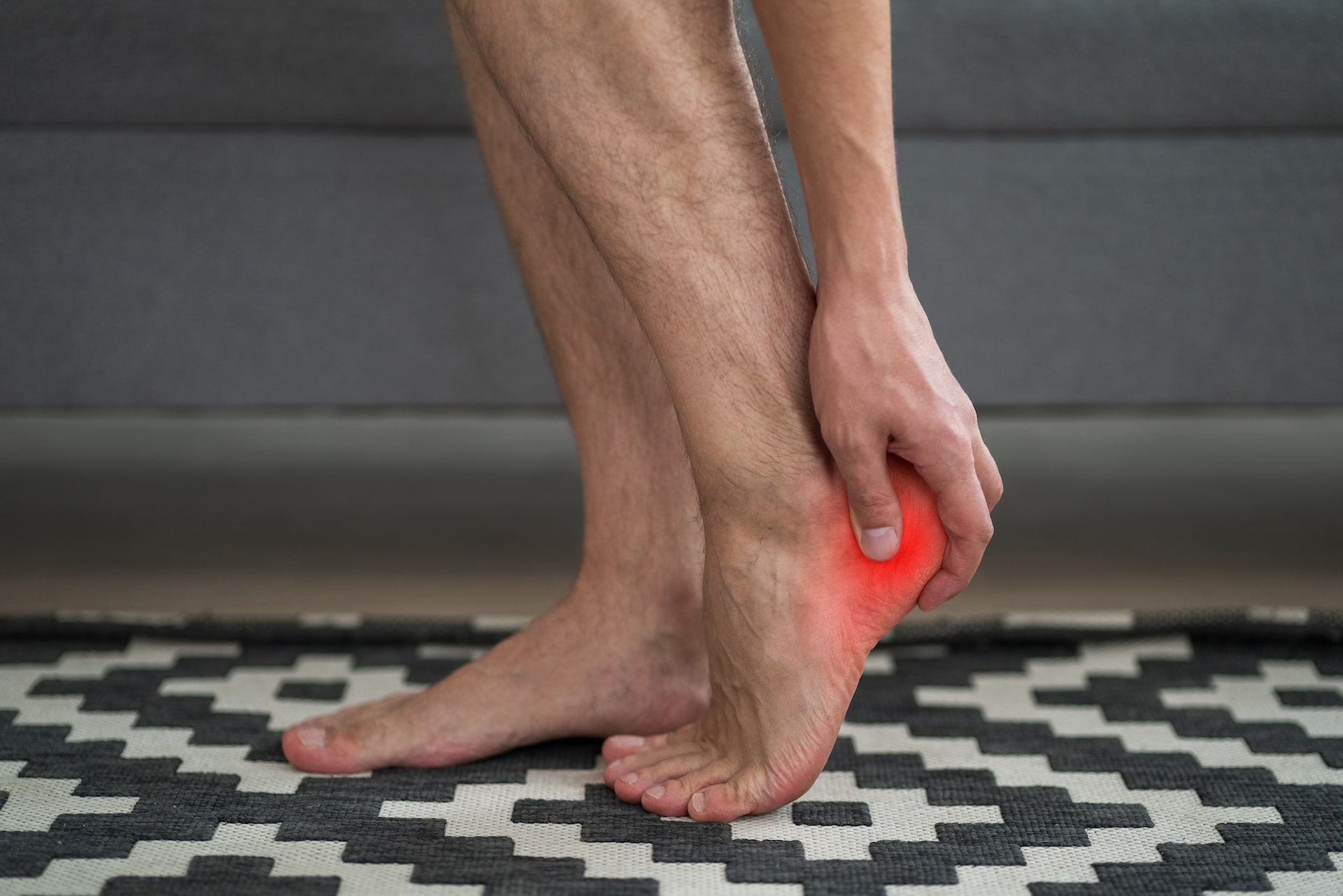Here is a list of four common causes of heel pain in adults:
Plantar Fasciitis
Plantar fasciitis is one of the most common causes of heel pain in adults. This injury is a result of strain and small tears to the plantar fascia ligament, usually from excessive walking or running. As the largest ligament in the body, the plantar fascia can cause moderate to severe pain radiating throughout the entire sole.
The symptoms are generally worse in the mornings. When you rise out of bed, or sit up and apply pressure to the inflamed area, you can experience intense pain. A series of flexion stretches and massage can eliminate some of the inflammation, but you still may be unable to walk on hard surfaces without discomfort.
Achilles Tendonitis
The Achilles tendon is the largest tendon in your body, connecting your heel bone to your calf muscles. This tendon undergoes a great deal of stress when running and jumping, which may ultimately lead to tendonitis.
Tendonitis of the Achilles is the inflammation of the tendon. This is usually a result of repeated stress on the area, rather than an isolated injury. If you are not a consistent runner, and you decide to randomly start running five miles per day with minimal stretching, then you are prone to developing Achilles tendonitis.
The pain can be moderate to severe, radiating up the back of your heel and causing swelling of the tendon itself. You will often notice the pain in the mornings, after strenuous exercise, or during daily walks.
Heel Bursitis
swellingBursitis of the heel is the result of the bursa sacs and applying pressure on the back of the heel bone. These bursa sacs are responsible for lubricating and cushioning the tendons and muscles as they pass over the bone.
Repeated walking, running, or jumping, can cause the bursa sacs to inflame. Heel bursitis is located beneath the Achilles tendon and shares similar characteristics with Achilles tendonitis, but is regarded as less severe.
The pain is present in the back, and bottom of the heel. Experiencing pain while standing on your tiptoes, the presence of warm, red skin, and pain while bending your ankle upwards, are all usual symptoms of Heel Bursitis.
Stress fracture of the heel bone
A stress fracture is a small crack in the heel bone. Overuse is the main cause of a stress fracture. If your new job requires more strenuous movements, or if you’ve taken up a new workout regiment, then you are prone to developing stress fractures. When you expose your heels to new activity, without proper conditioning, then you run the risk of your bones cracking under newfound pressure.
The pain ranges from mild to severe and can be further complicated by swelling around the area of the crack. The repetitive stress on your heels after the crack can hinder the ability to properly heal, or heal the bone in an abnormal position, causing long-term pain.
The aforementioned conditions are the most common diagnosis of heel pain. Informing yourself of the symptoms and conditions can help you eliminate pain triggers, and mitigate long-term damage before your doctor can properly examine your heels.
If you have yet to schedule a consultation for your heel pain, Kansas City Foot Specialists can help. We can diagnose your heel pain causes and take the necessary measures to ensure you’re able to walk pain-free. Call us at (913) 338-4440 or contact us online so that we can work toward relieving your pain.



